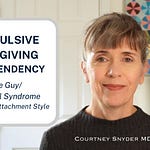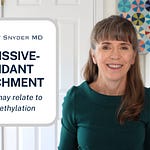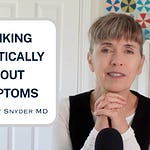In this episode, I discuss the anxious (ambivalent–preoccupied) attachment style — a pattern marked by intensity, dependence, and a longing for reassurance.
I address how this attachment pattern develops, how it can appear in adulthood, and what kinds of therapeutic and holistic supports can help someone move toward a more secure attachment style. Specifically, I discuss:
How inconsistency in early caregiving (and even threats or experiences of abandonment) can lead to an anxious attachment style and problems with emotional regulation.
The key differences between anxious and avoidant attachment patterns
What the infant-toddler attachment research revealed about early caregiving and attachment dynamics
How anxious attachment can manifest as overwhelm, and fear of abandonment in adult relationships
Links between attachment and biochemical factors such as inflammation, methylation, high copper, high pyrroles, mast cell activation, and even biotoxin illness such as mold toxicity.
Psychotherapy approaches that promote regulation and security — including learning about healthy boundaries
The importance of structure, daily routines, and developing a reliable “inner parent”
Mind–body strategies such as guided meditation, goal-focused journaling, and creative learning
How addressing both emotional and biochemical roots can support long-term healing and resilience
With awareness, compassion, education and support, we can rewire our nervous system toward greater calm, clarity, and self-trust.
As always, I welcome your thoughts and questions.
Until next time,
To learn more about non-patient consultations, treatment, and monthly mentorship groups, please visit my website at:
Medical Disclaimer:
This newsletter is for educational purposes and not intended or implied to be a substitute for professional medical advice, diagnosis, or treatment for either yourself or others, including but not limited to patients that you are treating (if you are a practitioner). Consult your physician for any medical issues that you may be having.









